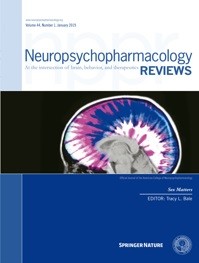 “While recent research has shown that cannabis access laws can reduce the use of prescription opioids, the effect of these laws on opioid use is not well understood for all dimensions of use and for the general United States population. Analyzing a dataset of over 1.5 billion individual opioid prescriptions between 2011 and 2018, which were aggregated to the individual provider-year level, we find that recreational and medical cannabis access laws reduce the number of morphine milligram equivalents prescribed each year by 11.8 and 4.2 percent, respectively. These laws also reduce the total days’ supply of opioids prescribed, the total number of patients receiving opioids, and the probability a provider prescribes any opioids net of any offsetting effects. Additionally, we find consistent evidence that cannabis access laws have different effects across types of providers, physician specialties, and payers.”
“While recent research has shown that cannabis access laws can reduce the use of prescription opioids, the effect of these laws on opioid use is not well understood for all dimensions of use and for the general United States population. Analyzing a dataset of over 1.5 billion individual opioid prescriptions between 2011 and 2018, which were aggregated to the individual provider-year level, we find that recreational and medical cannabis access laws reduce the number of morphine milligram equivalents prescribed each year by 11.8 and 4.2 percent, respectively. These laws also reduce the total days’ supply of opioids prescribed, the total number of patients receiving opioids, and the probability a provider prescribes any opioids net of any offsetting effects. Additionally, we find consistent evidence that cannabis access laws have different effects across types of providers, physician specialties, and payers.”
https://www.ncbi.nlm.nih.gov/pubmed/31865260
“The results of this study suggest that passing cannabis access laws reduces the use of prescription opioids across several different measures of opioid prescriptions. Thus, the passage of Recreational cannabis laws (RCLs) or Medical cannabis laws (MCLs) may be a valid policy option for combating the ongoing opioid epidemic, even if these laws were not originally conceived for that purpose.”
https://www.sciencedirect.com/science/article/pii/S0167629618309020?via%3Dihub

 “Pain is a common and complex symptom of cancer having physical, social, spiritual and psychological aspects. Approximately 70%-80% of cancer patients experiences pain, as reported in India.
“Pain is a common and complex symptom of cancer having physical, social, spiritual and psychological aspects. Approximately 70%-80% of cancer patients experiences pain, as reported in India. “Chronic pain affects a significant percentage of the United States population, and available pain medications like opioids have drawbacks that make long-term use untenable.
“Chronic pain affects a significant percentage of the United States population, and available pain medications like opioids have drawbacks that make long-term use untenable. “Transcutaneous electrical nerve stimulation (TENS) promotes antinociception by activating the descending pain modulation pathway and consequently releasing endogenous analgesic substances.
“Transcutaneous electrical nerve stimulation (TENS) promotes antinociception by activating the descending pain modulation pathway and consequently releasing endogenous analgesic substances. “Medical cannabis use is an emerging topic of interest in orthopedics. Although there is a large amount of literature on medical cannabis use for managing various types of pain, few studies have focused on orthopedic conditions. There is little high-quality evidence in core orthopedic areas. The objective of this study was to summarize the literature on the efficacy of cannabis use for pain related to orthopedic conditions.
“Medical cannabis use is an emerging topic of interest in orthopedics. Although there is a large amount of literature on medical cannabis use for managing various types of pain, few studies have focused on orthopedic conditions. There is little high-quality evidence in core orthopedic areas. The objective of this study was to summarize the literature on the efficacy of cannabis use for pain related to orthopedic conditions. “Ecological research suggests that increased access to
“Ecological research suggests that increased access to  “Chronic pain is highly prevalent in most of the industrialized nations around the world. Despite the documented adverse effects, opioids are widely used for pain management.
“Chronic pain is highly prevalent in most of the industrialized nations around the world. Despite the documented adverse effects, opioids are widely used for pain management.  “Pain is the most frequent indication for which medical
“Pain is the most frequent indication for which medical  “Older adults may benefit from
“Older adults may benefit from